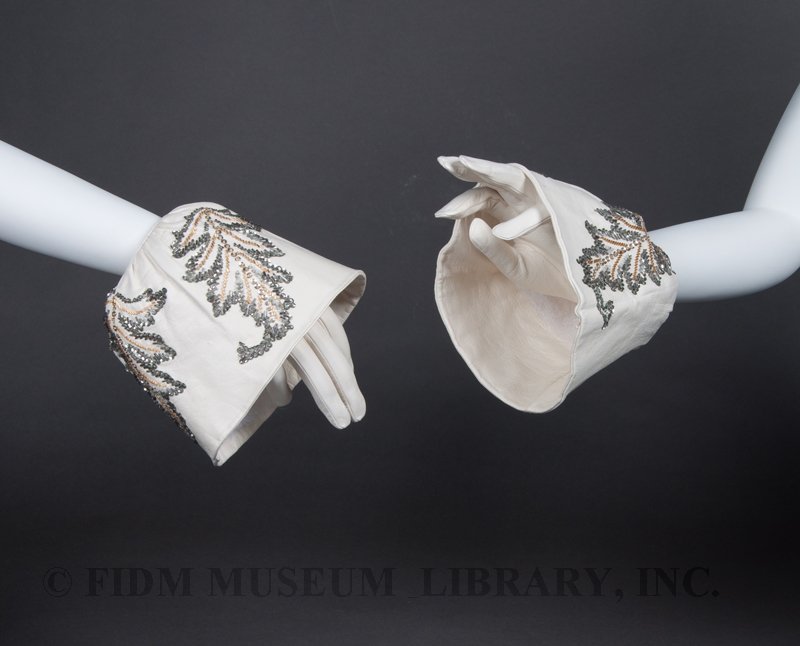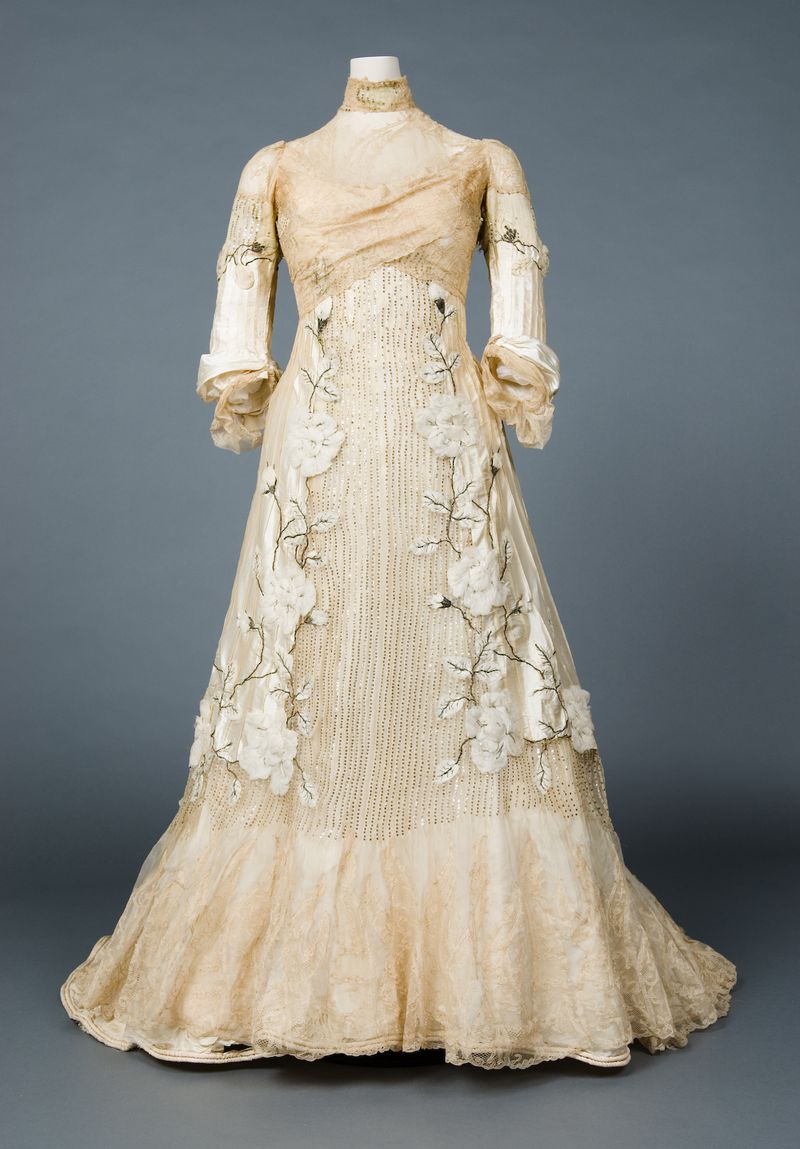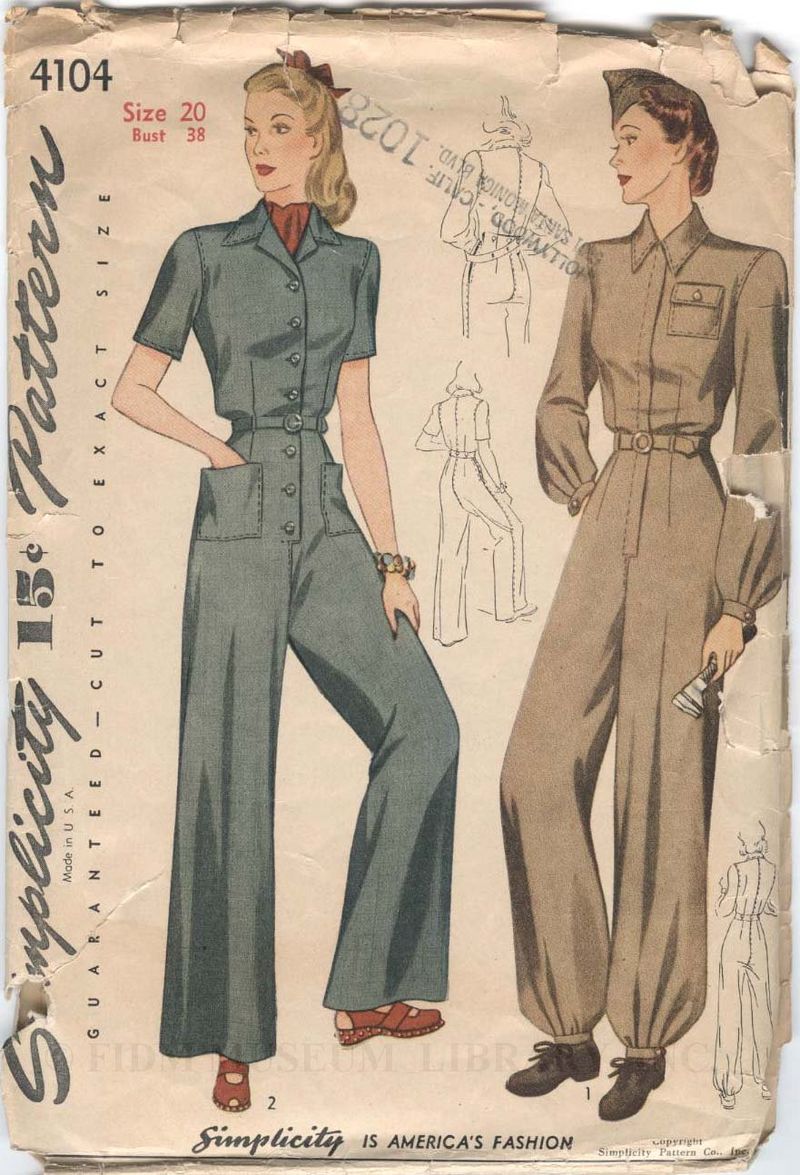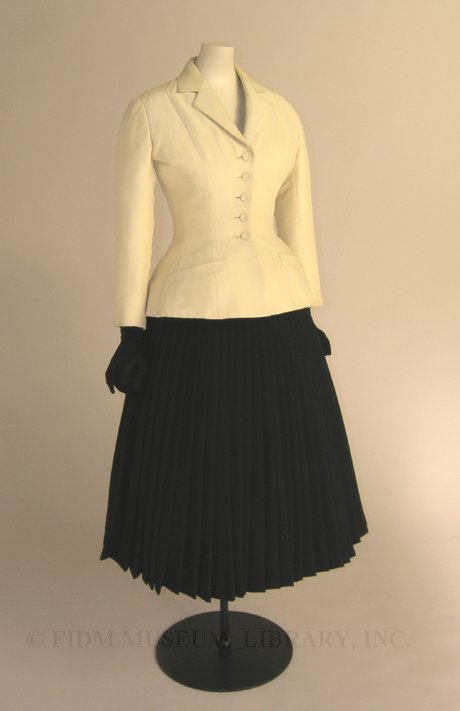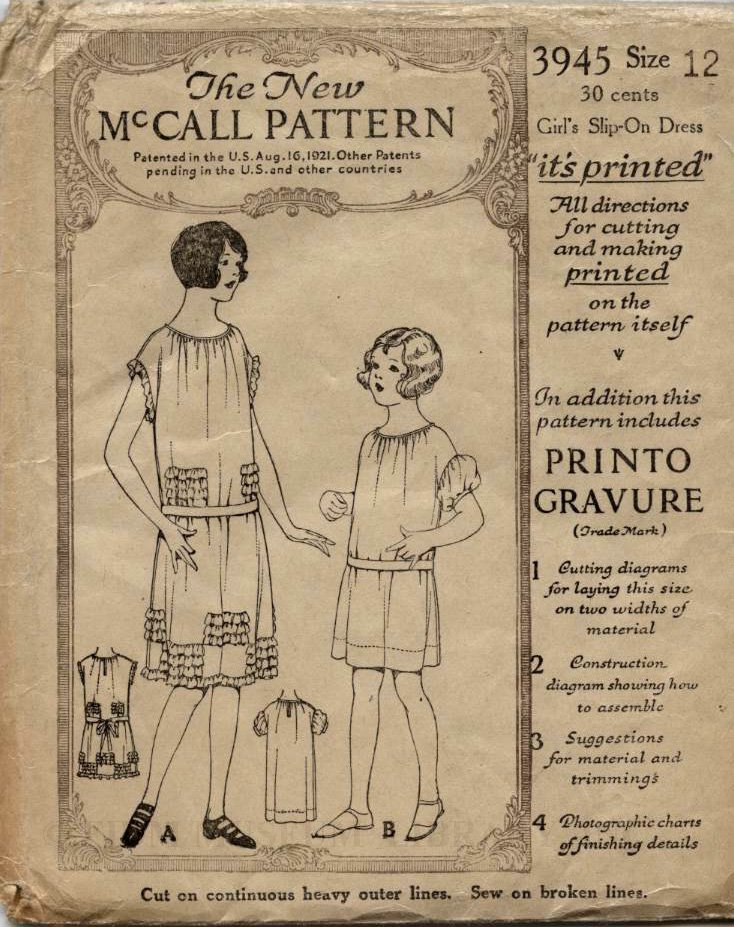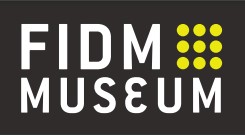This website uses cookies so that we can provide you with the best user experience possible. Cookie information is stored in your browser and performs functions such as recognising you when you return to our website and helping our team to understand which sections of the website you find most interesting and useful.
In contemporary fashion, gloves are generally overlooked. Warm knitted gloves keep our hands warm in winter, while sturdy canvas or leather gloves protect our hands during gardening or construction projects. Protective gloves (or sometimes mittens)... Read Article ››
“The Art of Dressing Has Never Been Manifested with So Much Brilliancy”: Fashion and the Paris Exposition of 1900
Did you know that working at a museum requires ace detective skills? In this blog post, Associate Curator Christina Johnson describes her research on a evening gown in our collection. This research, aka sleuthing, led to a wealth of knowledge about... Read Article ››
Sewing patterns from the FIDM Museum
Within the FIDM Museum collection are a number of smaller mini-collections. Some, like the Rudi Gernreich Archive, consist of large groupings of objects that document the work of a specific designer. Others, like our photograph collection, are less focused... Read Article ››
Christian Dior’s New Look at the FIDM Museum
With it's slope shouldered, close-fitting bodice, wasp waist and extravagantly full skirt, Christian Dior's New Look of 1947 is one of the most distinct and recognizable silhouettes of the twentieth century. In contrast to early 1940s feminine... Read Article ››
Aprons
In practical terms, aprons are merely protective overgarments, worn to prevent food or dirt from staining the clothing underneath. Despite these functional origins, aprons have taken on the much larger role of signifying feminine domesticity. This is... Read Article ››
Sewing patterns
All devotees of home sewing should know these two names: Madame Demorest and Ebenezer Butterick. Madame Demorest, wife of a successful New York merchant, was the first pattern maven. In the 1850s, she began selling tissue-paper patterns for home sewers via... Read Article ››

